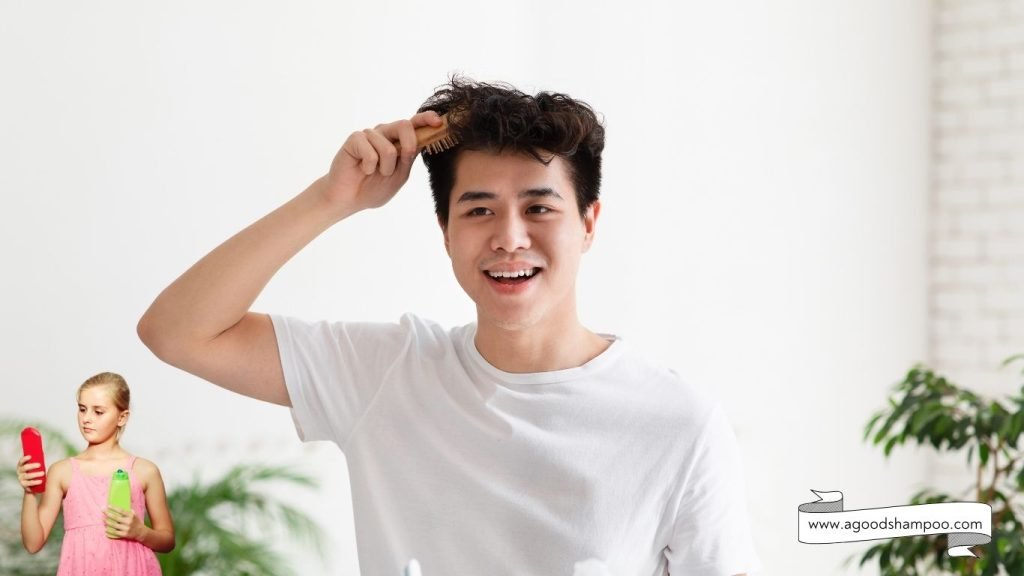Which Shampoo Is Good For Tinea Capitis? Best Treatment Guide
 Tinea capitis, also known as scalp ringworm, is a fungal infection that can be both uncomfortable and frustrating to deal with. This infection primarily affects the scalp and hair follicles, leading to itching, inflammation, and even hair loss. Choosing the right shampoo for tinea capitis is a crucial step in treating and managing this condition effectively.
Tinea capitis, also known as scalp ringworm, is a fungal infection that can be both uncomfortable and frustrating to deal with. This infection primarily affects the scalp and hair follicles, leading to itching, inflammation, and even hair loss. Choosing the right shampoo for tinea capitis is a crucial step in treating and managing this condition effectively.
Understanding Tinea Capitis
Tinea capitis is caused by dermatophyte fungi, which thrive in warm, moist environments. This condition commonly affects children but can also occur in adults. Symptoms include scaly patches on the scalp, hair loss in affected areas, redness, and severe itching. Left untreated, tinea capitis can lead to complications such as kerion, a painful, swollen lesion on the scalp.
To address the infection effectively, treatment must target the fungal infection at its source. The most effective treatment typically includes ketoconazole shampoo and other antifungal solutions designed to combat the fungus directly.
What Is the Best Treatment for Tinea Capitis?
When considering the tinea capitis treatment, it’s essential to look at options that not only reduce the fungal infection but also soothe the scalp and promote healthy hair regrowth. Ketoconazole shampoo for tinea capitis is widely regarded as one of the best treatments due to its potent antifungal properties.
Incorporating a ketoconazole shampoo into your haircare routine can help reduce inflammation and kill the fungus responsible for the infection. Ketoconazole is a powerful ingredient that directly combats the dermatophytes causing the scalp infection, making it a top choice for those battling tinea capitis.
How to Use Ketoconazole Shampoo for Tinea Capitis
Using ketoconazole shampoo properly is critical to achieving the best results. Here’s a quick guide on how to use it effectively:
- Wet your hair thoroughly: Before applying the shampoo, make sure your hair is completely wet.
- Apply a generous amount: Depending on the length and thickness of your hair, use enough shampoo to cover your entire scalp.
- Massage gently: Massage the shampoo into your scalp, focusing on the affected areas. Ensure the shampoo stays on your scalp for at least 5 minutes.
- Rinse thoroughly: After the recommended time, rinse the shampoo out completely. Avoid leaving any residue, as this can cause irritation.
- Use regularly: For best results, use the shampoo as directed by your doctor, typically twice a week.
For younger patients, such as children, always consult a healthcare provider to confirm the best treatment method. If your child is affected, look for a tinea capitis shampoo for children that is gentle yet effective.
Tinea Capitis Shampoo for Children
When choosing a tinea capitis shampoo for a child, it’s essential to select a product that is specifically formulated for sensitive skin and scalps. Many ketoconazole shampoos are designed to be gentle enough for children, but it’s always best to consult with a pediatrician before starting any treatment.
The treatment of tinea capitis in a child requires careful attention to ensure that the shampoo doesn’t cause additional irritation. The key is finding a balance between effectiveness and gentleness, allowing the medication to work without causing discomfort.
Which Shampoo Is Best for Fungal Infection?
Among the available treatments, ketoconazole shampoo stands out as one of the best shampoos for fungal infections like tinea capitis. Ketoconazole works by inhibiting the growth of fungi and yeast, which makes it an excellent option for people dealing with fungal infections of the scalp.
Other antifungal shampoos may also be recommended by healthcare professionals, including selenium sulfide and zinc pyrithione shampoos. However, ketoconazole shampoo remains a gold standard due to its superior efficacy in treating fungal infections.
Tinea Capitis Treatment Creams
In addition to shampoos, many people benefit from using tinea capitis treatment creams that complement the effects of antifungal shampoos. These creams typically contain antifungal agents like terbinafine or miconazole, which are effective at targeting the infection and soothing the irritated skin.
When combined with a good tinea capitis shampoo, these creams can help clear up the infection more quickly while reducing inflammation and promoting healing.
How to Regrow Hair After Tinea Capitis
One of the most concerning symptoms of tinea capitis is hair loss. Fortunately, hair loss from tinea capitis is usually temporary. Once the infection is treated, hair typically begins to regrow. However, regrowth can take some time, so patience is key.
To encourage hair regrowth:
- Continue using the prescribed shampoo until the infection is completely cleared.
- Use gentle, nourishing hair care products that won’t irritate your scalp further.
- Avoid excessive styling or heat treatments, which can damage new hair growth.
In some cases, a doctor may recommend topical treatments to stimulate hair growth. The focus should be on maintaining a healthy scalp environment while allowing hair to grow back naturally.
Tinea Capitis Treatment in Adults
While tinea capitis is more common in children, adults can also be affected. In adults, the treatment approach remains largely the same, with ketoconazole shampoo being the primary recommendation. However, adults may benefit from stronger antifungal medications depending on the severity of the infection.
Adult patients should also be mindful of the potential for scarring or permanent hair loss if the condition is not treated promptly. Early intervention is crucial to avoid lasting damage to the scalp and hair follicles.
Which Shampoo Is Good for Tinea Capitis?
When it comes to selecting the right shampoo for tinea capitis, it’s crucial to choose one that contains active antifungal ingredients like ketoconazole. This ingredient has been shown to be highly effective in eliminating the fungus responsible for tinea capitis while also providing relief from itching and irritation.
Other shampoos that may be beneficial include those with selenium sulfide, zinc pyrithione, or even natural ingredients like tea tree oil, which have antifungal properties. However, it’s always recommended to consult with a healthcare provider before trying alternative treatments.
For those looking to invest in a high-quality product, we recommend visiting agoodshampoo.com, where you’ll find a curated selection of shampoos designed to treat and soothe scalp conditions like tinea capitis. From ketoconazole shampoos to nourishing scalp treatments, agoodshampoo.com has everything you need to care for your scalp health.
| Product Name | Key Ingredients | Target User | Usage Instructions | Effectiveness for Tinea Capitis | Special Features |
|---|---|---|---|---|---|
| Ketoconazole Shampoo 2% | Ketoconazole | Adults, Children | Apply 2-3 times per week, leave for 5 minutes | Highly effective | Antifungal, reduces itching |
| Selenium Sulfide Shampoo | Selenium Sulfide | Adults, Children | Use twice a week, leave for 5 minutes | Moderately effective | Antifungal, relieves irritation |
| Zinc Pyrithione Shampoo | Zinc Pyrithione | Adults, Children | Use 3 times per week | Effective for mild infections | Soothing, antifungal |
| Terbinafine Cream | Terbinafine | Adults, Children | Apply twice daily to affected areas | Highly effective for tinea | Fights infections, reduces redness |
| Tea Tree Oil Shampoo | Tea Tree Oil | Adults | Apply 3 times per week | Mildly effective | Natural antifungal, soothing |
| Miconazole Cream | Miconazole | Adults | Apply daily to affected areas | Effective when used with shampoo | Fights fungal infections |
| Ketoconazole Shampoo for Kids | Ketoconazole (gentle formula) | Children | Use 2-3 times per week | Highly effective | Pediatric formula, gentle on scalp |
Treating tinea capitis requires a comprehensive approach that includes using an effective tinea capitis shampoo, potentially supplemented with tinea capitis treatment creams. Ketoconazole shampoo stands out as a trusted option due to its proven ability to combat the fungal infection and promote a healthier scalp.

Marlena Stell is a beauty expert and educator passionate about empowering individuals through personalized hair care and wellness advice.